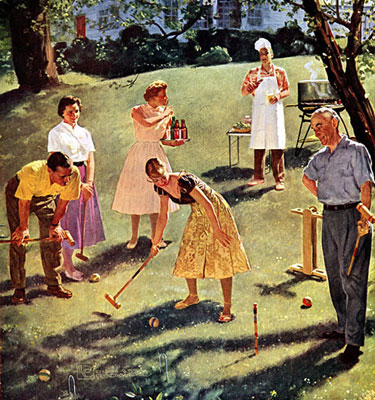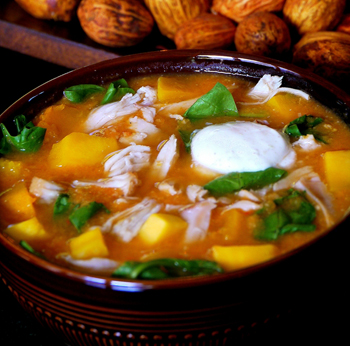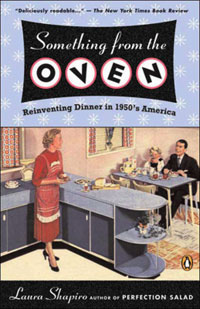 Recently I was at a library book sale and as usual I scanned for hidden treasure among the cookbooks. Browsing cookbooks is nothing short of a history lesson. Here's what I found, as men came back from fighting overseas and Americans travelled abroad for pleasure, their hunger for exotic recipes increased and so did the number of international cookbooks.
Recently I was at a library book sale and as usual I scanned for hidden treasure among the cookbooks. Browsing cookbooks is nothing short of a history lesson. Here's what I found, as men came back from fighting overseas and Americans travelled abroad for pleasure, their hunger for exotic recipes increased and so did the number of international cookbooks.
Cooking on a budget was a popular theme in times of recession like the 1970's. Curiously the cookbooks from the 50's and 60's were dominated by the use of processed foods. Browsing the volumes, I began to wonder, just how did processed food come to such popularity anyway?
Not long after my shopping trip I began reading Something from the Oven: Reinventing Dinner in 1950s America. Not a cookbook at all, but a rich and fascinating history of cooking in America in the post WWII period up until the early 60's. Suddenly it all made sense!

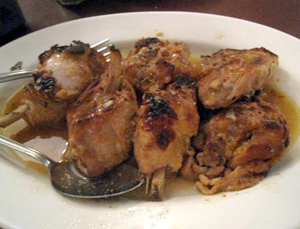 It’s funny what you think you know. For the last thirty-five years I’ve been cooking chicken scarpariello – or shoemakers’ chicken — for my family. It’s one of my kids’ favorite dishes out of my humble repertoire – cut up pieces of chicken, still on the bone, flash-fried with garlic, white wine and rosemary. The best way to eat this dish is with your fingers, mopping up the sauce with a piece of good Italian bread. It’s heaven on a plate. I first came across the recipe in Alfredo Viazzi’s cookbook. Alfredo had a restaurant – he had a few of them, actually – in Greenwich Village where we lived in 1972. We ate at Trattoria d’Alfredo a couple times a week, often spotting James Beard at a table by himself, packing away Alfredo’s fabulous food.
It’s funny what you think you know. For the last thirty-five years I’ve been cooking chicken scarpariello – or shoemakers’ chicken — for my family. It’s one of my kids’ favorite dishes out of my humble repertoire – cut up pieces of chicken, still on the bone, flash-fried with garlic, white wine and rosemary. The best way to eat this dish is with your fingers, mopping up the sauce with a piece of good Italian bread. It’s heaven on a plate. I first came across the recipe in Alfredo Viazzi’s cookbook. Alfredo had a restaurant – he had a few of them, actually – in Greenwich Village where we lived in 1972. We ate at Trattoria d’Alfredo a couple times a week, often spotting James Beard at a table by himself, packing away Alfredo’s fabulous food.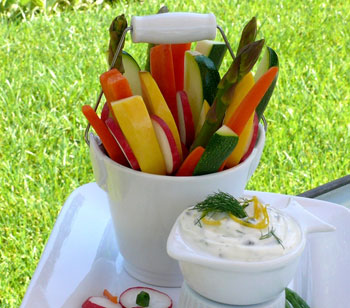 This weekend in the United States we celebrate Labor Day. A holiday that originated in the 1880's to give the working citizens of America a day of rest.
This weekend in the United States we celebrate Labor Day. A holiday that originated in the 1880's to give the working citizens of America a day of rest. 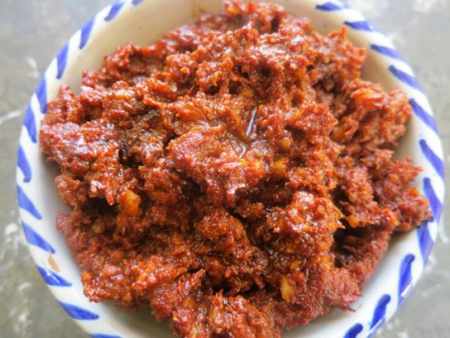 This is one of those recipes that seems more complicated than it is. Make it once and you’ll never need to look at the recipe again. Eat what you make and you’ll become addicted, learning new ways to use the nutty, spicy, sweet, deeply satisfying condiment. It’s a no brainer on simple grilled, broiled or poached fish or chicken, but it’s on vegetables where the sauce really shines.
This is one of those recipes that seems more complicated than it is. Make it once and you’ll never need to look at the recipe again. Eat what you make and you’ll become addicted, learning new ways to use the nutty, spicy, sweet, deeply satisfying condiment. It’s a no brainer on simple grilled, broiled or poached fish or chicken, but it’s on vegetables where the sauce really shines.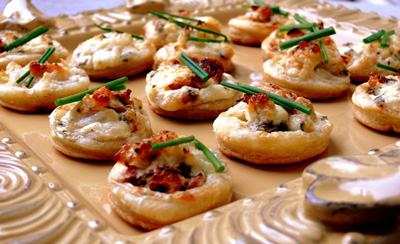 Easy and impressive food...I love it. Another quick and easy appetizer to make your dinner party go as smooth as possible.
Easy and impressive food...I love it. Another quick and easy appetizer to make your dinner party go as smooth as possible.